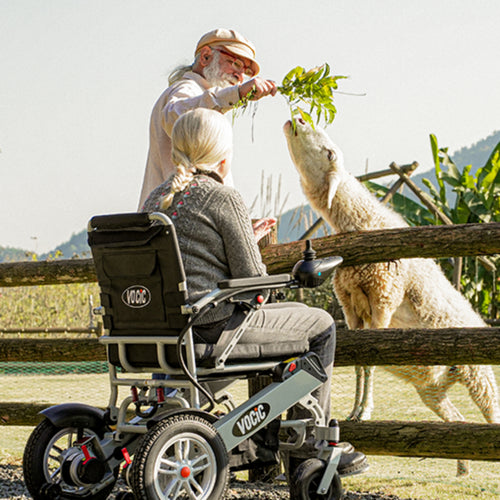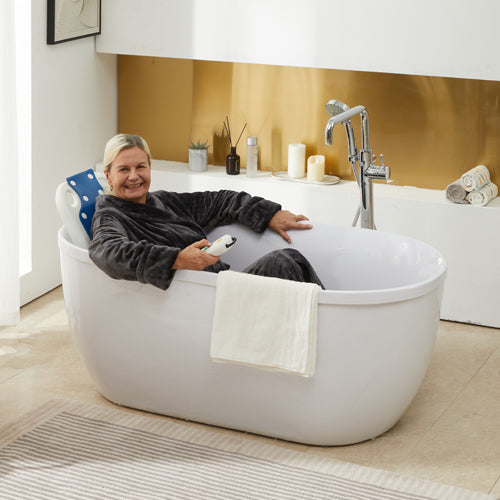You can bring electric scooters on an airplane. This needs attention: different countries have different customs requirements for the export or import of electrified products.
Therefore, before traveling, try to find out the transportation requirements from the airline you are traveling on to avoid the electric scooter being detained by customs or destroyed.
Which Type of Electric Scooters Can Bring to Airplane?
-
Battery Capacity and Type: Most airlines allow electric scooters with lithium-ion batteries if they are under 160 watt-hours (Wh). Scooters with batteries between 100Wh and 160Wh usually require airline approval before travel, while those under 100Wh are typically allowed without special permission.
-
Removable Batteries: Airlines generally prefer that electric scooter batteries be removable. If the battery can be detached, it often must be carried onboard as hand luggage, adhering to airline regulations for lithium-ion batteries.
-
Foldable and Compact Scooters: Many airlines require that electric scooters be foldable and compact to be allowed as carry-on or checked luggage. This ensures that they can be securely stowed during flight without causing safety concerns.
-
Safety and Documentation: Besides physical characteristics, having safety documentation and compliance certificates (like UN38.3 for batteries) can be necessary. It's important to have these documents handy, as airline staff may request to review them at check-in or boarding.
Electric Scooters that meet the above requirements can be transported by airplane. For example, our product, The VOCIC D91 Fold-Go foldable mobility scooter uses a 2x6Ah lithium battery, which is far less than 100 watts, and is lightweight, so it meets airline battery standards. It is the best choice for your travel.

Transportation Requirements of Different Airlines
Transportation requirements for carrying items such as electric mobility scooters or other personal transportation devices can vary significantly from airline to airline. These requirements depend on airline policies regarding size, weight, and safety, particularly regarding battery-operated devices. Below are some of the factors and policies of some major airlines:
-
American Airlines: American Airlines permits e-scooters classified as mobility aids to be checked for free if they meet FAA battery regulations. The battery must be securely attached to the scooter or wrapped in protective packaging if removed and carried on. Notify the airline 48 hours before your flight if your device has a lithium-ion battery.
-
Air Canada: Air Canada generally does not allow e-scooters unless they are classified as mobility aids. For mobility scooters, the battery must have a capacity of 300-watt hours or carry spare batteries with a capacity of no more than 160-watt hours each. Be sure to contact the airline ahead of time to discuss specific requirements and preparations needed for the flight, such as battery disposal and scooter size.
-
British Airways: Electric scooters can be transported as checked baggage if they comply with general baggage size and weight restrictions. Lithium batteries, on the other hand, must be removed and carried in carry-on luggage and comply with the airline's battery watt-hour limit.
-
Qantas: Electric scooters are allowed if they are classified as mobility aids. Scooters must meet certain dimensions and lithium batteries up to 300Wh are allowed if carried or checked in after being removed from the scooter and protecting the terminals. Any backup batteries must not exceed 160Wh each. Scooters that are not mobility aids face stricter regulations and are generally not allowed.
-
Air France: Electric scooters can generally be transported as checked baggage, subject to size and weight restrictions. Lithium batteries must be removed and carried in carry-on luggage, and watt-hour restrictions are similar to those on other major airlines.
-
Lufthansa: E-scooters are also allowed under certain conditions. Scooters must comply with luggage size restrictions and batteries must meet specific safety regulations, including placing the battery in carry-on luggage if the battery is removable. Please consult the airline for specific requirements.
Each airline's policies may vary, so be sure to verify information closer to your travel date to avoid inconveniences.
How to Bring an Electric Scooter on a Plane?
Taking an e-scooter on a plane involves several key steps to ensure compliance with airline regulations, especially when it comes to battery safety. Here is a guide:
-
Check airline policies: Before traveling, contact your airline or visit their website to review their specific policies regarding transporting e-scooters. This includes size, weight, and battery limitations. Each airline may have different rules and these may change, so get the latest information.
-
Battery Requirements: Most airlines follow guidelines for lithium batteries set by the International Air Transport Association (IATA). Generally, batteries must have a capacity of no more than 160 watt hours (Wh). If your scooter's battery is removable, you may need to pack it in your hand luggage. Cover the terminals and package them in a sturdy box to protect the battery from short circuits.
-
Packing the Scooter: If the airline allows the scooter as checked baggage, make sure it is folded correctly and packed securely to avoid damage if necessary. Bubble wrap or a special carrying case may be required. There are also some airlines that may require the scooter to be disassembled.
-
Documentation: Have all relevant documents ready, including the e-scooter’s manual and proof of battery specifications. This is useful if you need to demonstrate compliance with airline policies.
-
At the airport: Declare your electric scooter and its battery when checking in. Be prepared for possible additional checks and therefore need to arrive at the airport early.
-
Security: As with any electronic device, your scooter and its battery will go through security. Follow the safety personnel's instructions and be prepared to explain the battery's safety features.
-
Boarding and Storage: If carry-on is allowed, make sure your scooter meets the airline's carry-on size specifications. If checked, make sure it is properly marked and handled as fragile baggage.
You need to be well prepared before your travel date to ensure a smooth experience at the airport and prevent any surprises with airline policies regarding e-scooters.

Other Modes of Transportation
If e-scooters are not allowed on a plane, you have several alternative transportation options:
-
Courier or Freight Shipping: You can choose to ship the electric scooter via courier or freight services to your destination. Make sure to comply with local regulations and choose a reputable service provider.
-
Sea Freight: If time is not a critical factor, sea freight can be a relatively economical option. You can contact freight forwarders or international shipping companies to inquire about the process and costs of shipping the electric scooter by sea.
-
Specialized Transport Companies: Some companies specialize in transporting electric vehicles, including electric scooters. They may offer full-service solutions from doorstep pickup to delivery at the destination.
-
Renting or Purchasing Local Transportation: If similar services are available at your destination, consider renting or purchasing an electric scooter locally to meet your short-term transportation needs.
When selecting the appropriate shipping method, consider factors such as transit time, cost, security, and compliance with destination regulations. Advance planning and research are recommended to ensure smooth transportation of your electric scooter.
Conclusion
From the above article, I learned that to take an electric scooter on a plane, you must be familiar with the airline’s policies regarding battery restrictions and scooter operation. Make sure your scooter battery complies with airline regulations and prepare all necessary documentation. Or consider other options, like renting a scooter at your destination for a hassle-free travel experience.
FAQ
1. Can you put a scooter in luggage?
You can put a scooter in checked luggage if it meets the airline's size and weight restrictions. For electric scooters, check airline policies regarding lithium batteries; they often need to be carried in hand luggage. Always confirm with your airline before traveling.
2. How much is it to bring a scooter on a plane?
The cost of bringing a scooter on board a plane varies from airline to airline and depends on the size and weight of the scooter. E-scooters must comply with airline battery regulations and may incur additional fees if they are oversized or heavy. Although airlines have specific requirements, mobility scooters are transported free of charge as a basic mobility aid. Be sure to check with your airline for detailed policies and potential fees.
3. What type of battery is not allowed on airplanes?
On airplanes, due to safety risks such as fire, lithium metal batteries with a lithium content exceeding 2 grams, lithium-ion batteries exceeding 160Wh, and wet batteries are generally not allowed to be carried in checked baggage. Batteries between 100Wh and 160Wh may be carried in hand luggage and may require airline approval. Leak-proof wet batteries have fewer restrictions but must meet safe packaging standards. Always check the latest TSA or airline guidelines before traveling.
Related Reading: 3 Best Folding Mobility Scooters for Easy Travel







